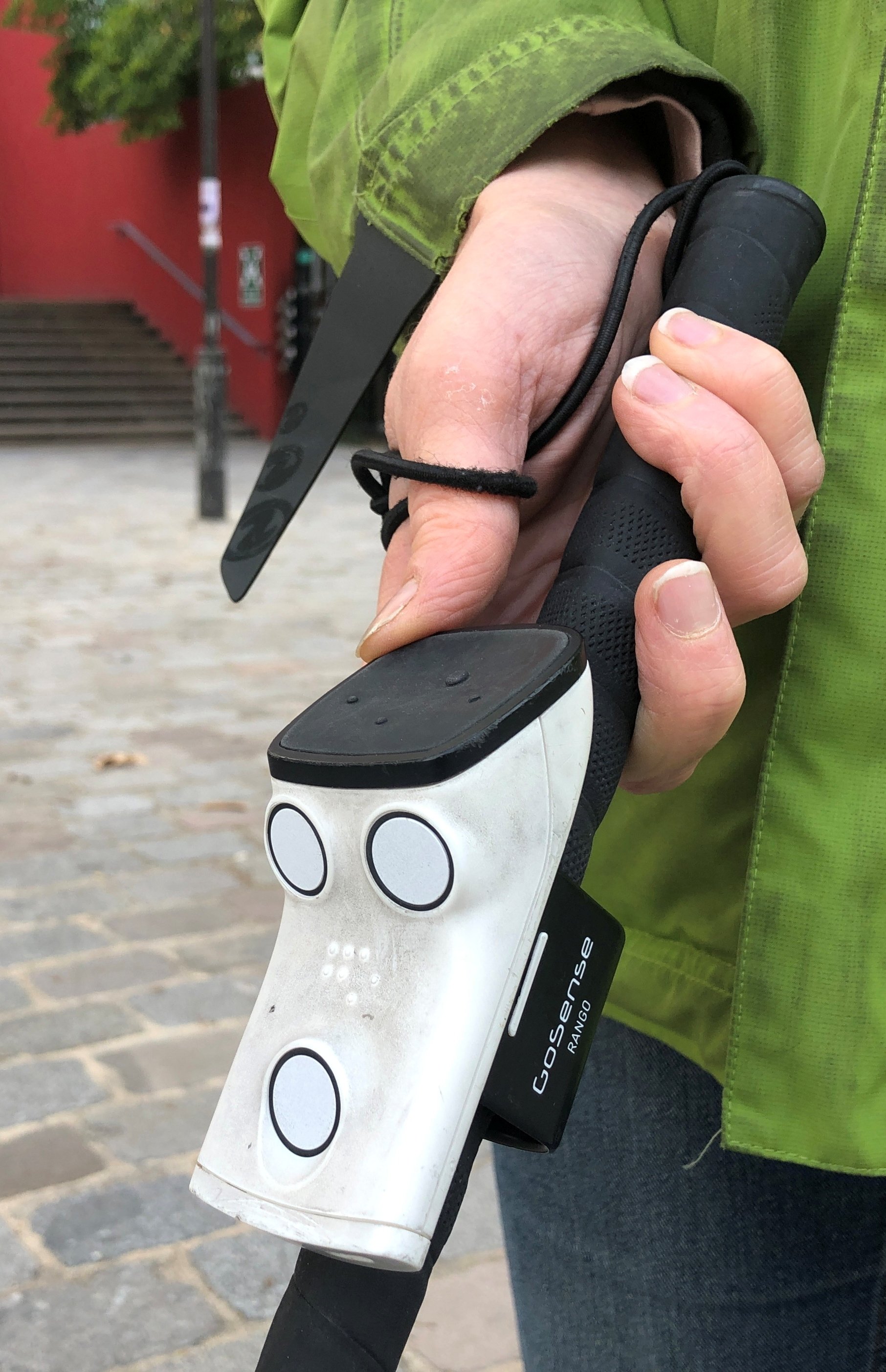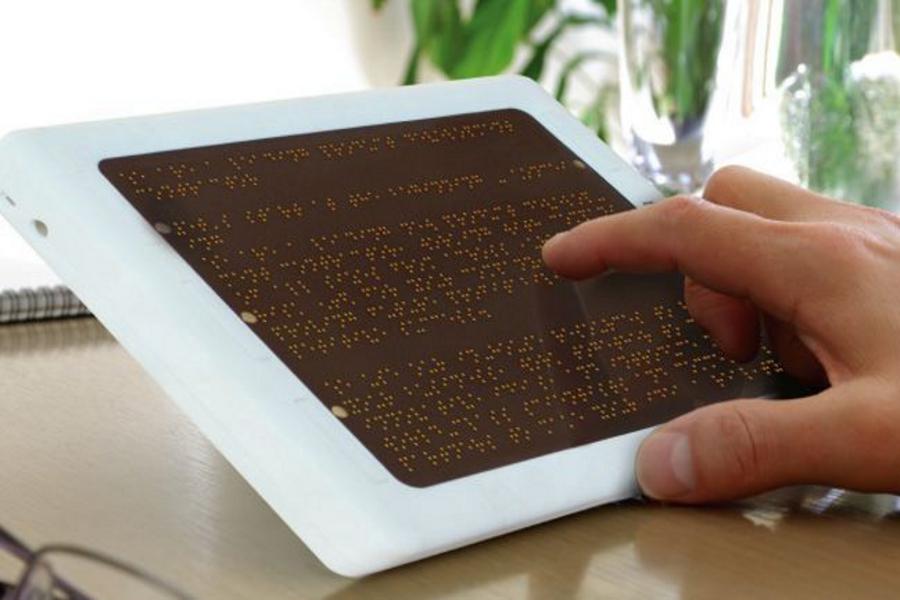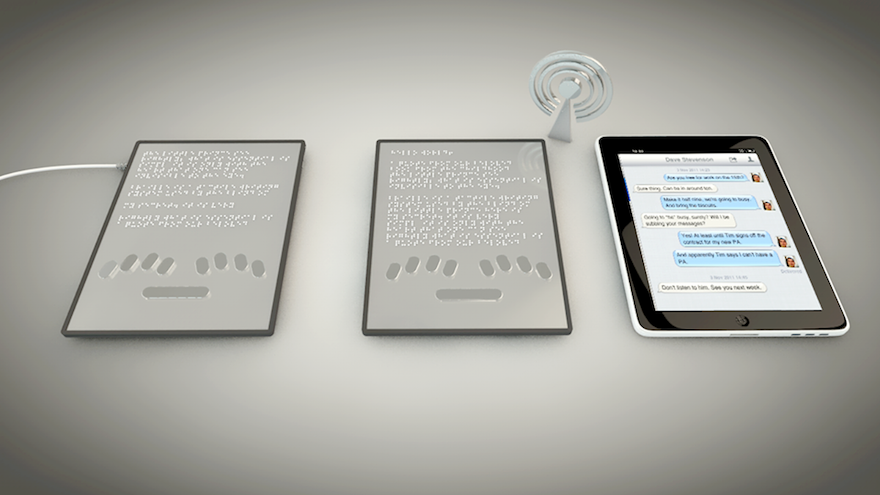Enhance Accessibility with Braille Displays and Notetakers
Enhance Accessibility with Braille Displays and Notetakers
Blog Article
Discover Ingenious Devices Created for the Aesthetically Damaged
The growth of innovative tools for the aesthetically impaired represents a significant improvement in ease of access and independence. Technologies such as clever glasses with AI abilities and mobile applications made to give acoustic summaries are reshaping daily experiences for customers.
Smart Glasses for Navigation

Smart glasses made for navigation are transforming the way visually impaired people connect with their environment. These sophisticated tools make use of a mix of video camera innovation, expert system, and acoustic responses to provide real-time info concerning environments. By employing challenge detection systems, smart glasses can signal customers to possible risks, allowing much safer flexibility in both strange and familiar setups.
The combination of GPS modern technology further improves navigation capabilities, enabling users to get auditory directions as they relocate. This hands-free technique not only promotes independence but also equips aesthetically damaged individuals to navigate metropolitan landscapes with enhanced confidence. Furthermore, lots of wise glasses are furnished with functions that determine sites and road indications, offering contextual info that enhances the user experience.
Furthermore, the advancement of these devices is constantly advancing, with companies functioning to boost the precision of item recognition and expand the series of navigational features. As clever glasses come to be a lot more cost effective and accessible, they hold the potential to substantially change every day life for visually impaired users. Ultimately, these ingenious devices stand for a crucial step towards inclusivity, offering boosted flexibility and a better sense of autonomy for individuals navigating the world around them.

Mobile Application for Daily Living
Just how can mobile applications enhance the day-to-days live of aesthetically damaged people? Mobile applications are changing the means visually impaired customers navigate their environments, manage daily jobs, and accessibility info. These applications offer important support with different performances, fostering freedom and improving top quality of life.
Numerous innovative mobile apps are made specifically for daily living. For circumstances, applications like Be My Eyes attach visually impaired users with sighted volunteers via video calls, permitting them to get real-time help with jobs such as reading labels or navigating strange areas. Seeing AI, established by Microsoft, makes use of fabricated knowledge to explain surroundings, checked out message, and recognize things, successfully transforming a smartphone into an effective tool for everyday support.
Furthermore, navigation applications customized for the visually damaged, such as Aira and BlindSquare, offer audio-based instructions and ecological information, enabling customers to traverse their environments safely and with confidence. Past navigating and instant help, mobile apps additionally sustain company and task monitoring, with functions that assist customers set suggestions, create to-do checklists, and track visits. In recap, mobile applications function as crucial resources, empowering visually damaged individuals to lead even more independent and fulfilling lives.
Wearable Technologies for Support
Empowerment via modern technology is significantly evident in the realm of wearable tools made to help aesthetically impaired people. These cutting-edge tools incorporate perfectly right into every day life, boosting navigation and supplying vital responses to customers. Smart glasses furnished with cameras can read and recognize faces message why not try this out out loud, enabling users to connect more confidently in social and expert setups.
Another noteworthy innovation is using haptic responses systems in wearable gadgets. These systems use resonances or various other responsive signals to share details concerning the user's environment, such as barriers or adjustments in terrain, improving mobility and safety. Wearable modern technologies additionally include wristbands that connect to smartphones, signaling customers to notices through refined resonances, thus enhancing connection without reliance on visual signs.
As these innovations continue to develop, they are not only improving self-reliance for visually damaged individuals however also cultivating a higher feeling of incorporation in society. By bridging the space between challenges faced in everyday living and the capacity for autonomy, wearable innovations function as essential tools in the quest for equal rights and empowerment for those with visual impairments.
Sound Summary Devices
Audio summary tools play a vital function in improving ease of access for visually damaged individuals, providing them with the capacity to involve with visual media. Speech-to-text devices for low vision. These devices offer narrated summaries of essential visual aspects in movies, television programs, and live performances, ensuring that individuals can fully understand the context and emotions communicated through visuals
Audio summary can be incorporated into different systems, consisting of streaming services, cinema testings, and live theater. Several popular streaming solutions now consist of audio summary as an access function, permitting visitors to select it quickly. In addition to traditional media, specialized apps likewise exist, giving audio summaries for art exhibitions, museums, and other cultural events.
The efficiency of audio summary pivots on the ability of the storytellers, who have to convey visual information succinctly without diminishing the original sound. Innovations in this field are likewise leading the way for more customized experiences, where users can adjust the level of information and pacing according to their choices.
Braille Innovations and Gadgets
Braille gadgets go to the website and developments have dramatically transformed the way aesthetically impaired people communicate with message and information. Modern innovations have led to the advancement of versatile devices that enhance literacy and freedom amongst users. Especially, Braille display modern technologies have advanced, enabling vibrant reading experiences. These gadgets transform digital text right into Braille, enabling individuals to access a vast variety of details on computers, tablets, and smart devices.
Moreover, portable Braille notetakers combine conventional Braille input with contemporary performances, assisting in note-taking, organizing, and record editing and enhancing on the move. Wearable technology for low vision. These small devices frequently feature text-to-speech capabilities, bridging the gap in between Braille and acoustic info
On top of that, ingenious Braille printers have arised, permitting customers to create Braille labels, documents, and educational products effectively. This ease of access fosters greater engagement in educational and specialist settings, eventually promoting inclusivity.
Additionally, research right into wise Braille technologies remains to expand. Instruments that integrate fabricated knowledge are being explored to give real-time navigating support and contextual information, boosting the individual experience in diverse setups. Generally, these developments reflect a commitment to encouraging visually impaired people with technology, guaranteeing they can easily accessibility and engage with the globe around them.

Final Thought
The development oversized blue light glasses of innovative devices for the aesthetically impaired considerably enhances freedom and high quality of life. These modern technologies not only foster better addition yet likewise advertise autonomy in day-to-day activities, eventually contributing to a much more obtainable and equitable culture for visually impaired people.
As smart glasses end up being more inexpensive and easily accessible, they hold the potential to considerably change daily life for visually impaired customers. Mobile applications are changing the way aesthetically damaged customers navigate their atmospheres, take care of daily tasks, and accessibility details. Apps like Be My Eyes link aesthetically damaged customers with sighted volunteers via video phone calls, permitting them to obtain real-time assistance with tasks such as checking out labels or browsing unknown rooms.In addition, navigating apps tailored for the aesthetically damaged, such as Aira and BlindSquare, offer audio-based directions and environmental info, allowing individuals to traverse their environments securely and with confidence.The innovation of cutting-edge devices for the aesthetically damaged considerably enhances independence and quality of life.
Report this page